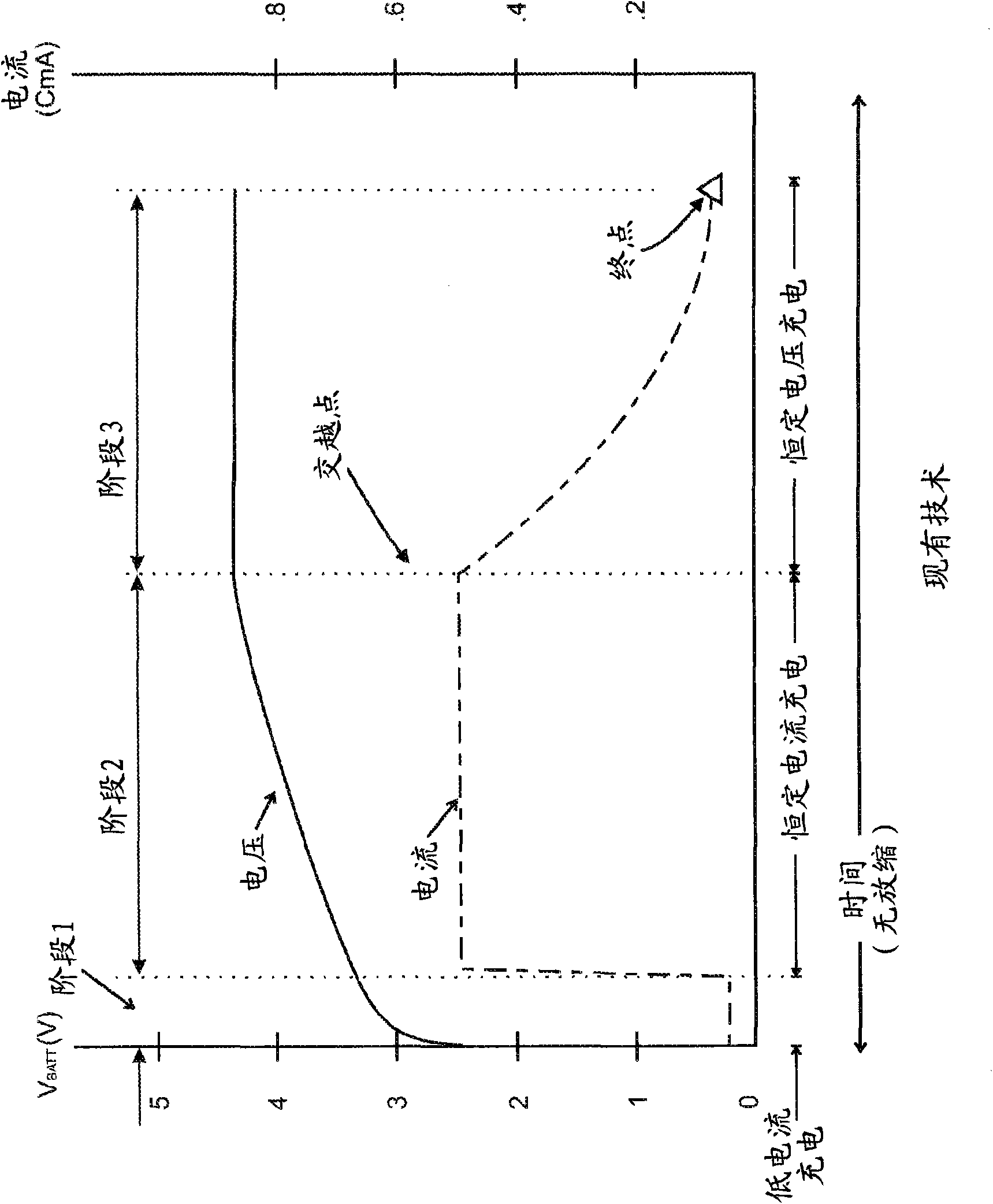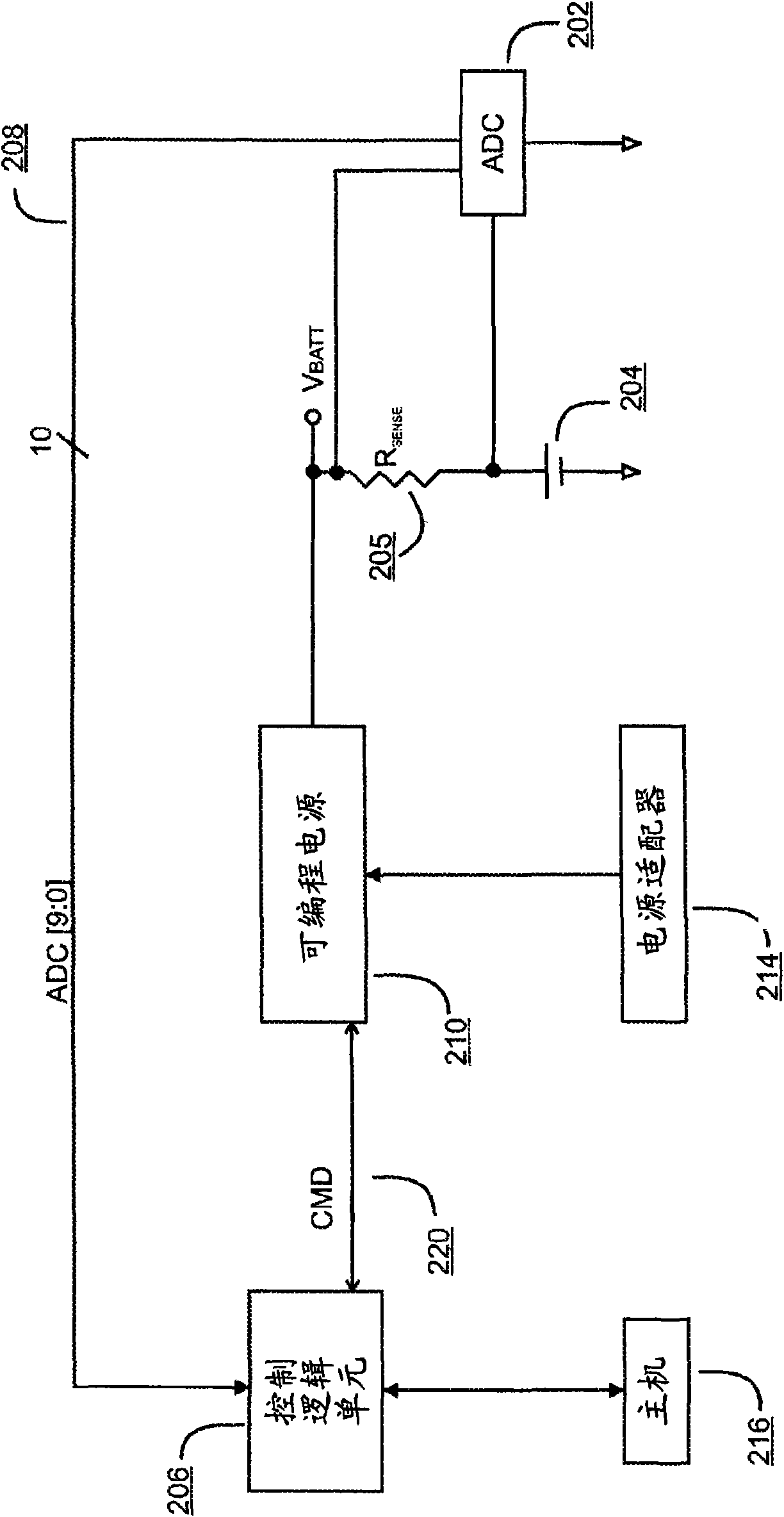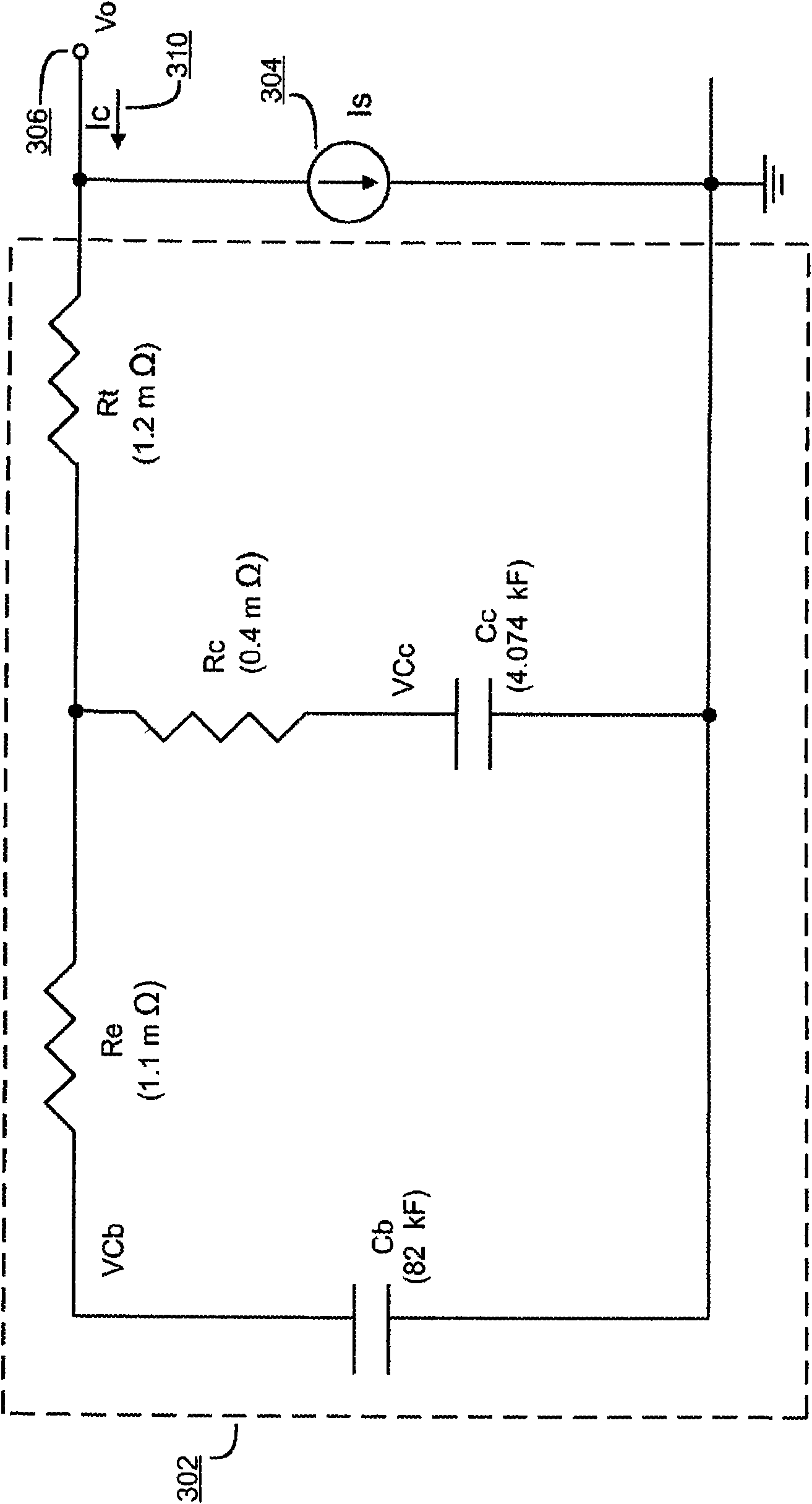Method for charging a battery using a constant current adapted to provide a constant rate of change of open circuit battery voltage
A change rate, battery charging technology, applied in secondary battery charging/discharging, battery circuit devices, secondary batteries, etc., can solve the problems of slow charging curve, shortening battery life, damage, etc.
- Summary
- Abstract
- Description
- Claims
- Application Information
AI Technical Summary
Problems solved by technology
Method used
Image
Examples
Embodiment Construction
[0031] The examples described in this section illustrate but do not limit the invention. The invention is not limited to any particular circuitry, software, voltage, current values, battery chemistry, timing, or other parameters.
[0032] The unit "CmA" refers to the current flowing into or out of the battery per hour as a fraction of the battery's rated capacity. For example, if the battery has a rated capacity of 2000mAh, then 0.1CmA would be a current of 200mA. The rated capacity of a battery as specified by the battery's manufacturer is generally used to specify the charge rate, although in actual practice the capacity of a given battery may vary.
[0033] The following timers are referred to in the description. Timing can be achieved in various ways, as is known to those skilled in the art. Embodiments include: a software counter that increments or decrements its value aperiodically; a hardware timer whose value can be read and compared with a previous value; an up or ...
PUM
 Login to View More
Login to View More Abstract
Description
Claims
Application Information
 Login to View More
Login to View More - Generate Ideas
- Intellectual Property
- Life Sciences
- Materials
- Tech Scout
- Unparalleled Data Quality
- Higher Quality Content
- 60% Fewer Hallucinations
Browse by: Latest US Patents, China's latest patents, Technical Efficacy Thesaurus, Application Domain, Technology Topic, Popular Technical Reports.
© 2025 PatSnap. All rights reserved.Legal|Privacy policy|Modern Slavery Act Transparency Statement|Sitemap|About US| Contact US: help@patsnap.com



